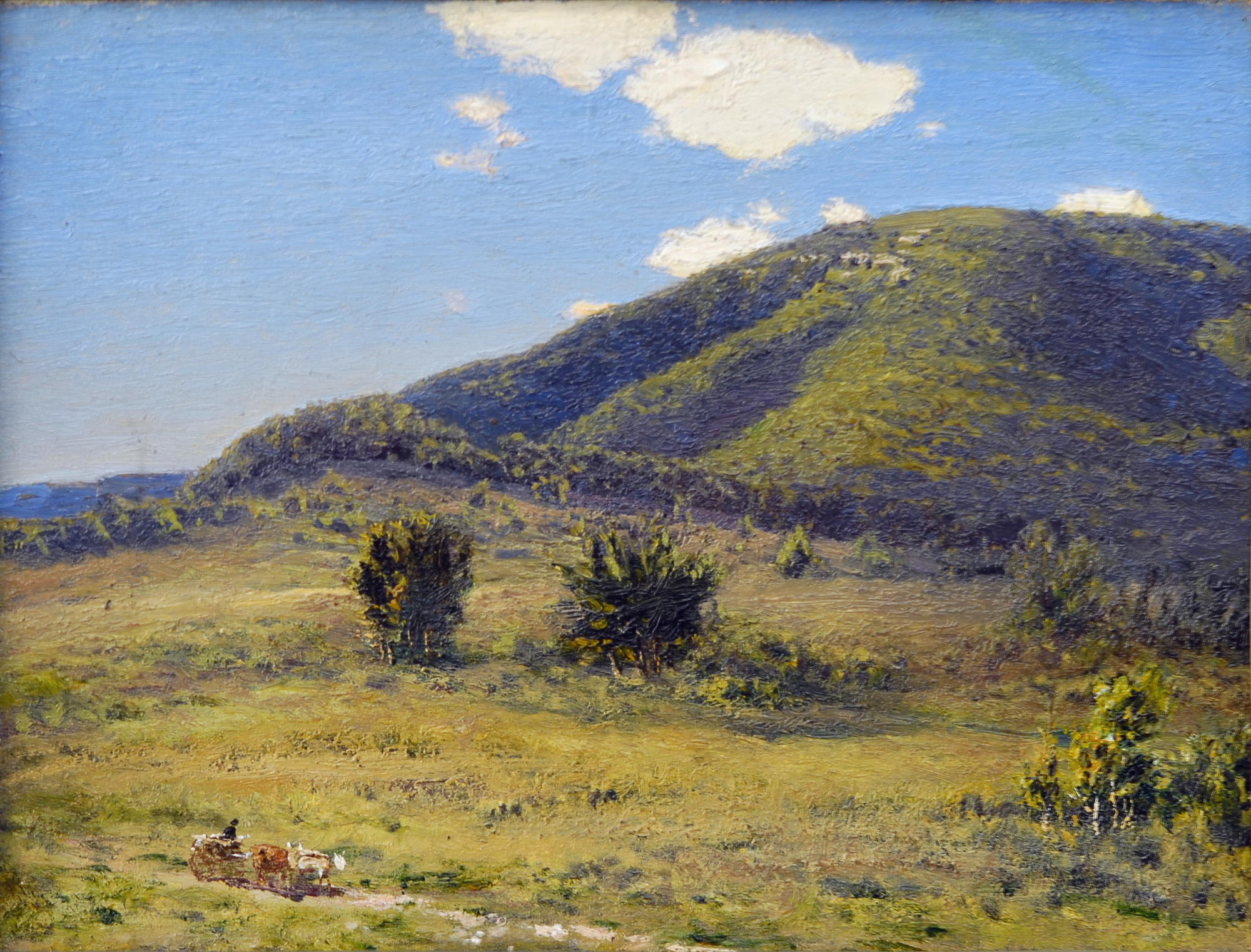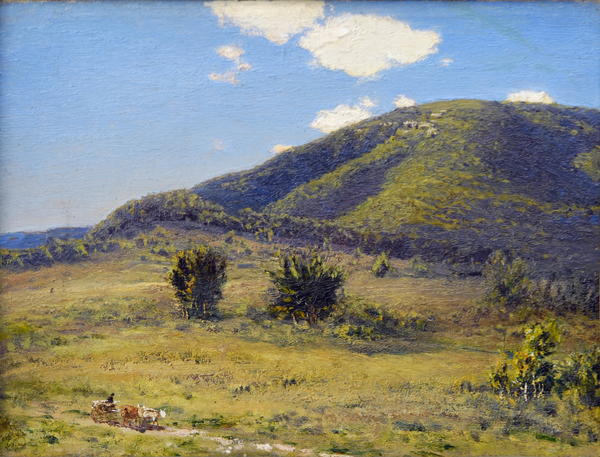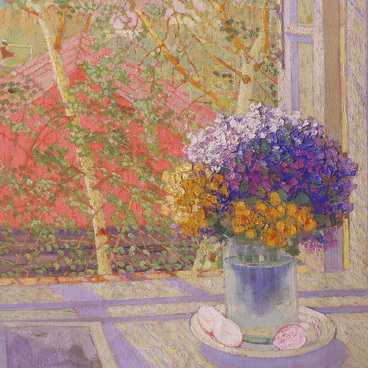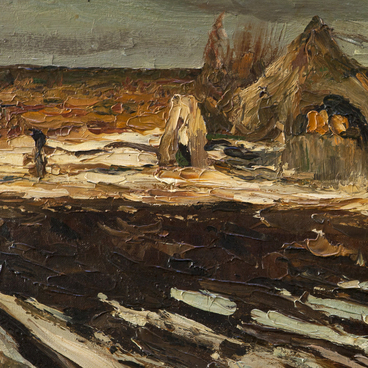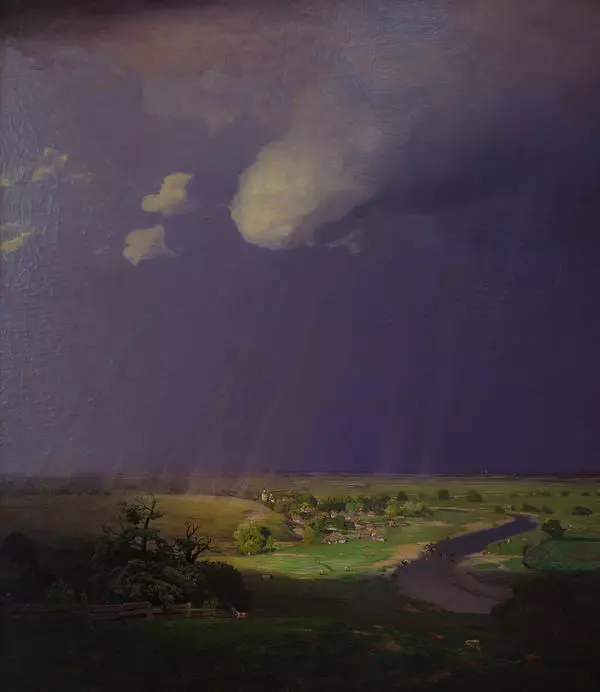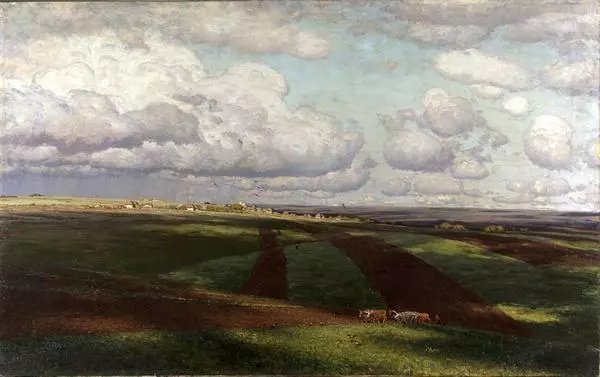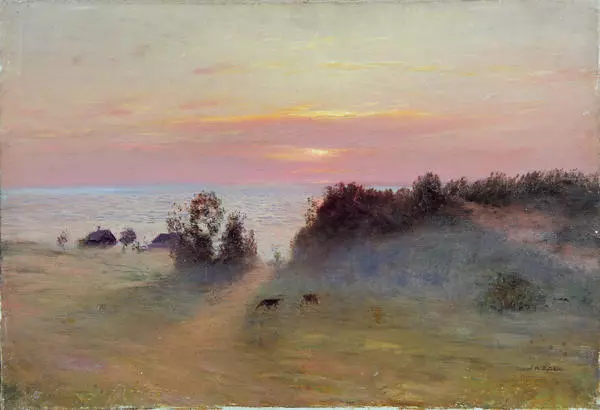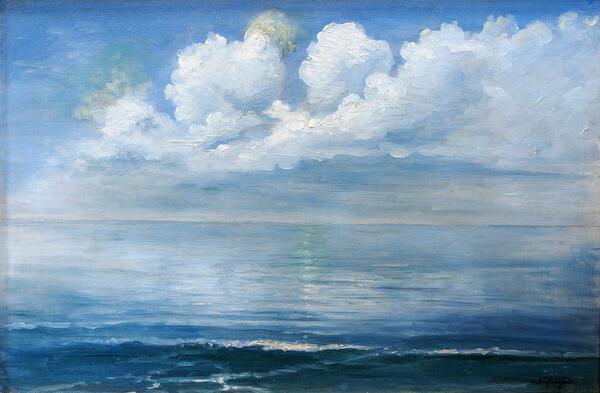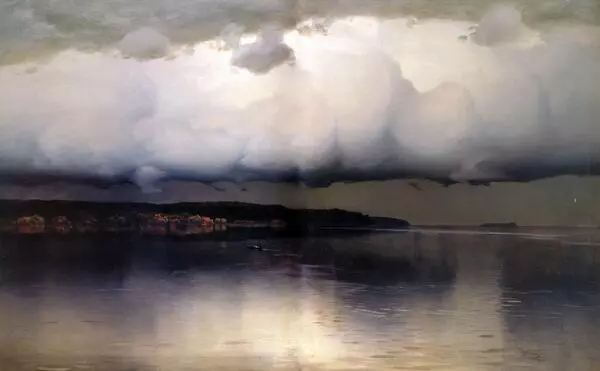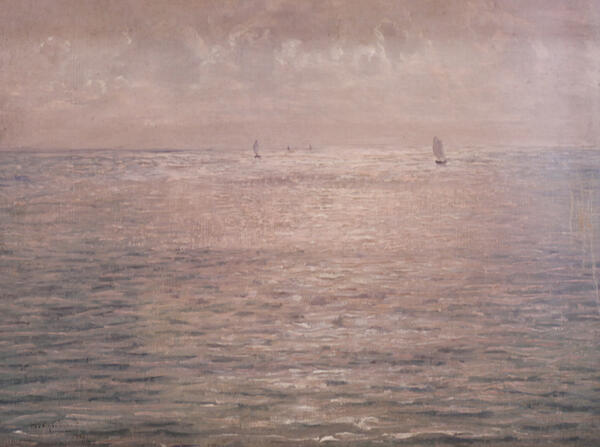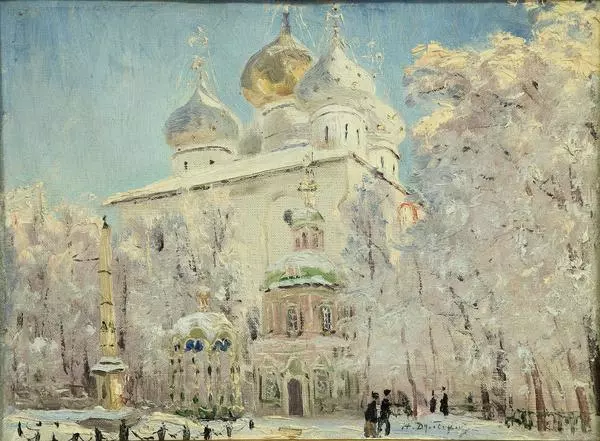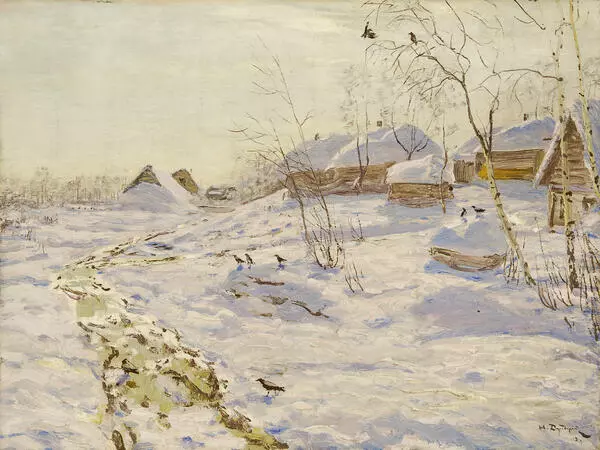The collection of the Stavropol Krai Museum of Fine Arts includes two small landscapes by Russian painter Nikolai Dubovskoy — a marine and a mountain scene. The museum received the marine in 1967 from M. Taran, a native of Stavropol, before that the work was part of the collection of his brother, Leningrad collector A. Taran. Experts believe that Dubovskoy’s marine paintings are not inferior to those of Ivan Aivazovsky and Alexei Bogolyubov.
The Mountain Scene came to the Stavropol Krai Museum of Fine Arts from the Hermitage. Dubovskoy depicts southern nature — a grass-covered mountain slope with peculiar soft folds of splits. Over the slope there are bright white clouds carefully delineated against the blue sky. There are scrubby trees with lush crowns scattered across the valley overgrown with olive-yellow grass. In the foreground, there is a cart track, and a two-animal road cart — a light passenger carriage — on it. The painting is small in size, but it cannot be called a sketch, as the artist represented a complete composition in the landscape.
Nikolai Dubovskoy is one of the most prominent landscape painters of the Russian school, an Academician of Painting and a member of the Council of the Academy of Arts, professor. He has often received awards for his works at international exhibitions. He became the last director of the Society for Travelling Art Exhibitions (The Itinerants) and participated in 40 exhibitions of the Society in total.
Promoting the traditions of Russian landscape painting, Dubovskoy developed his own type of landscape — laconic and simple. Space, light and air are the main components of the landscape image, and the harmony of color combinations creates the mood.
During his life, Dubovskoy created almost 1,500 paintings and sketches. The artist painted different seasons and light conditions, states and moods of nature, in the genre of proper landscape and scenic landscape, he painted urban and rural views, used painting staffage — small figures of people and animals. Born in Novocherkassk, Dubovskoy spent his youth in Ukraine and studied military science in Kiev, so he understood the nature of the central part of Russia, the Russian North and the Caucasus. Dubovskoy painted no portraits or genre scenes. The artist was convinced that it was the landscape that could “kindle a human heart and direct it to the good”.
The Mountain Scene came to the Stavropol Krai Museum of Fine Arts from the Hermitage. Dubovskoy depicts southern nature — a grass-covered mountain slope with peculiar soft folds of splits. Over the slope there are bright white clouds carefully delineated against the blue sky. There are scrubby trees with lush crowns scattered across the valley overgrown with olive-yellow grass. In the foreground, there is a cart track, and a two-animal road cart — a light passenger carriage — on it. The painting is small in size, but it cannot be called a sketch, as the artist represented a complete composition in the landscape.
Nikolai Dubovskoy is one of the most prominent landscape painters of the Russian school, an Academician of Painting and a member of the Council of the Academy of Arts, professor. He has often received awards for his works at international exhibitions. He became the last director of the Society for Travelling Art Exhibitions (The Itinerants) and participated in 40 exhibitions of the Society in total.
Promoting the traditions of Russian landscape painting, Dubovskoy developed his own type of landscape — laconic and simple. Space, light and air are the main components of the landscape image, and the harmony of color combinations creates the mood.
During his life, Dubovskoy created almost 1,500 paintings and sketches. The artist painted different seasons and light conditions, states and moods of nature, in the genre of proper landscape and scenic landscape, he painted urban and rural views, used painting staffage — small figures of people and animals. Born in Novocherkassk, Dubovskoy spent his youth in Ukraine and studied military science in Kiev, so he understood the nature of the central part of Russia, the Russian North and the Caucasus. Dubovskoy painted no portraits or genre scenes. The artist was convinced that it was the landscape that could “kindle a human heart and direct it to the good”.
